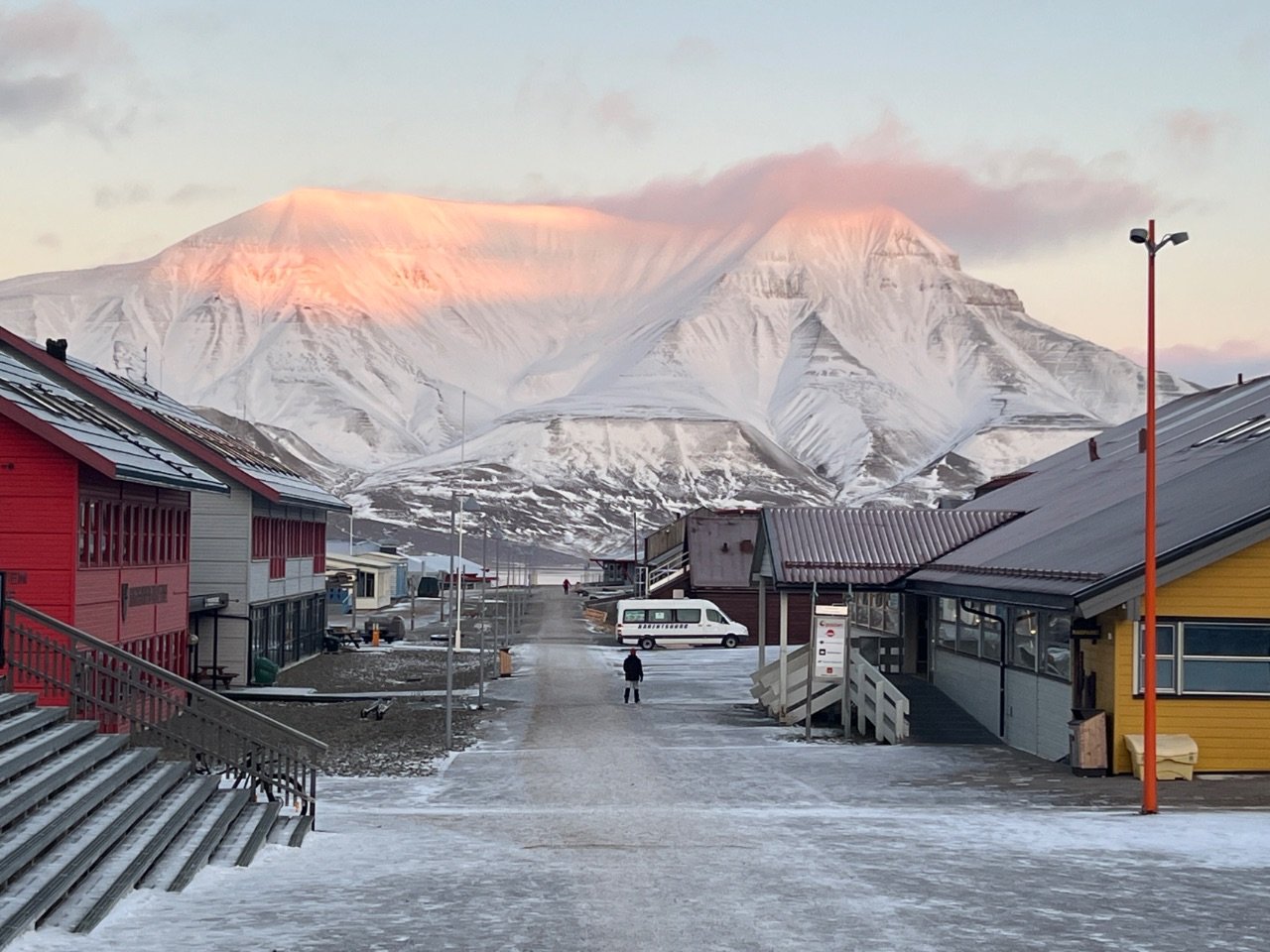Day 631 - Tromsø to Svalbard
A Flight Across the Arctic
Despite all my efforts, a ship to Svalbard was out of the question. I had been frustrated at every turn. Cyn and I debated whether to fly to Svalbard or be purists and move on through Sweden to northern Finland and Lapland country.
"We're here," I said to Cyn. "It'd be crazy not to go just because we couldn't find a ship. We've got to see this place."
"Let's do it," Cyn agreed.
It takes an hour and a half to fly from Tromsø to Longyearbyen Airport, about 700 miles. Thick clumps of clouds hung low and smoky on white peaks as the small jet taxied for take off, but once in the air, scattered clouds gave me grand glimpses of the Arctic Ocean. When we landed, we would be standing above 78° latitude north. When you’re at 90º, you’ve reached the pole.
On March 3rd, 8 months and 12,000 miles earlier, we had been at almost the same latitude south, Zodiacing amongst massive Antarctic icebergs, humpback whales, surrounded by the great South Ocean and its unworldly, ice-bound continent. We had gone from the bottom to the top of the planet.
In Antarctica, it had been summer. Here we were entering mid fall, and temperatures, and the sun, were dropping. Where the wild, Antarctic sun was high in March, here it was low as earth tilted away from the big star that keeps us all alive. There were other differences too. No penguins in the North, but we hoped to see plenty of polar bears, which never find their way to Antarctica. Whales were possible, but we were unsure of how much wildlife Svalbard would deliver as the winter approached. I hadn't seen even a single bird.
While we were eager to see polar bears, we wanted to make sure we did it from afar. Up close and personal they can be deadly. In these parts, they were the apex predator. I had once read a story about a man in Alaska's North Slope, Utkiavik, when I was researching bowhead whales for my book Immortality, Inc. Bowhead whales, it turns out, routinely live more than 200 years and may not age. Anyhow, the man, a local Inupiat hunter, had gotten too close to the bear on the ice. He was maybe 50 feet away when the bear saw him, and before he could unshoulder his rifle and shoot it, it took his head clean off with one swipe. That’s why in these parts, people keep their doors and cars open. It's your best chance for safety if you come across one.
After landing, a bus dropped us on the main road close to our Hotel, The Vault. The temperature was, as predicted, in single digits when we stepped outside. A quarter mile walk took us to the hotel while our nose hairs froze. Inside we took off our boots. The snow, the mud, salt, and stone can destroy floors and carpets. We met Harald at the reception desk, a bookish young man from Oslo who I thought might make a good priest once he got some theology and few homilies under his belt.
A First Look at Longyearbyen
Though it was only 4 PM, we got settled in and I walked in the pitch black out of the hotel to see what I could see. Harald said if I headed up the valley, I might get a decent view of the mountains below the town which was surrounded by immense mountains, barren of a single tree. In the dim light I could make they were white, but didn't have the snowy depth of Antarctica's ranges, at least not this time of year. Nevertheless, monstrous, awesome, were the only words that came to mind even if they did no justice to what I was looking at.
As we flew into the island, I had gazed at one peak after another, all of them completely snowbound. But here the mountains immediately nearby were packed with black trestles strung across them. Once upon a time gondolas of coal hung on cables that these trestles held – a system that unloaded billions of tons of coal from the mines sunk within.
Once upon a time these these lands were situated along the equator and its hot sun. There rain forests, dead dinosaurs and pterodactyls sunk in the muck of seabeds, and as the land migrated north to be scrounged by glaciers, and tossed by who knew what tectonic forces, it all finally arrived as Arctic coal delivering the enormous sums of money that enterprising barons were willing to dig out of it.
My face was growing numb as I passed other curious walkers who dotted paths at the base of the mountains. A couple of paved roads and several gravel versions seemed to be the main way to get around. I crunched past a modern grocery; a strip mall with enclosed retail shops selling the kind of Arctic gear that you could find just about anywhere in Norway; a bathhouse with a big swimming pool, its inside windows steaming and then freezing on the panes; a new apartment complex under construction. I even saw two joggers split off toward the world’s northernmost church. It was an odd mash up of tourist town and coal mining outpost. A place that had once been home to thousands of workers who bunked down in big housing units hauling the coal that once fired the world, but now had become a tourist stop where immense cruise ships entered the harbor in summer to disgorge 4000 tourists in a town of fewer than 2000 inhabitants.
The world was changing, even here at its very top.








